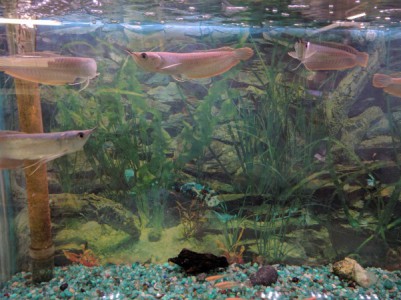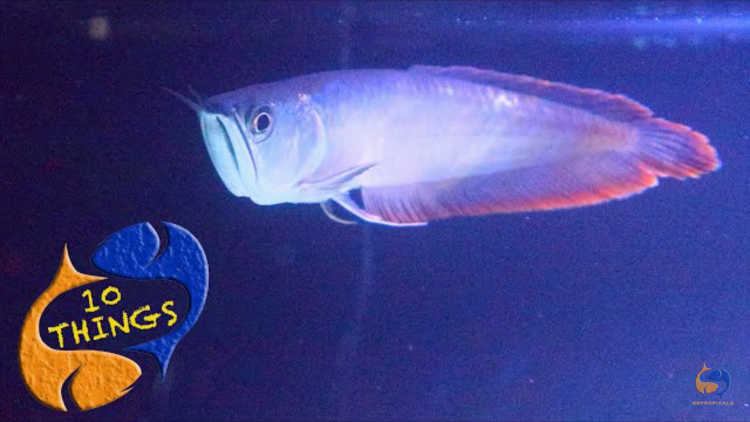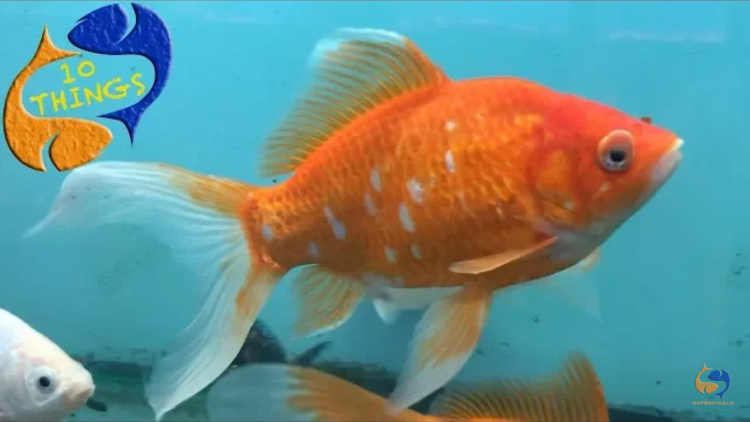- Name:
Silver Arowana
(View AKA's) - Family: Osteoglossidae
- Species: Arowana
- Scientific Name: Osteoglossum bicirrhosum


General info about Silver Arowana
Osteoglossum bicirrhosum dates back to the Jurassic age. This species has large, stout, bony and ornamented scales, these are silver but as the fish ages start to change to red, blue and green. They have some unusual characteristics like a bony tongue, a mouth that opens in 3 pieces to allow ingestion of larger prey, 2 sensory barbels in their lower jaw and their size as they can reach 47 inches the wild, however, in captivity their average size is 24 to 30 inches. These fish also have an interesting predatory behavior, they stay close to the shore waiting for prey then they jump out of the water to catch large insects or even birds hanging in low branches, this behavior led to the common name of “ Water Monkey”. This species is extremely important to the local community, it is a big source of protein and also has great value in the aquarium business allowing local fishermen to make good money selling these fish.
These fish should be kept in a 300 gallon tank at least 4 feet long and 4 feet wide, water pH should be between 6.0 and 7.0 and water temperature should range from 75ºF to 86ºF. The tank should have floating or overhanging vegetation, moderate water movement, a high proportion of dissolved oxygen, fine gravel substrate and open areas for swimming. These individuals are jumpers so the aquarium should be tightly covered. They can be kept in a community aquarium as long as their tankmates are too large to swallow, aggressive and territorial species should be avoided. It can be kept in groups, however, if they don’t have enough space they start to become aggressive towards each other.
Silver Arowana Diet & Nutrition
This species in omnivorous. In the wild, it feeds on fishes, terrestrial insects and plant material. In captivity, they can be fed with pieces of fish, prawns, large worms, vegetable matter and dried food. It is important to be careful when giving live food since it may have parasites.
Determining Sex of Silver Arowana
Mature males have longer anal fins while females are wider.
Breeding & Spawning Silver Arowana
In this species, males are the ones guarding the eggs, and later fry, in their mouth for about 2 months.
Common Diseases with Silver Arowana
These fish often get injured due to not having enough space in the tank to turn. Drop eye is also common in individuals in captivity because they look for food in the bottom instead of the top, having colorful balls floating on the surface helps preventing drop eye because it grabs their attention and they will look up instead of down.
Silver Arowana Origin
This species can be found throughout the Amazon basin. It has been introduced in some areas in California and Nevada, it is thought they haven’t spread more than those secluded areas because they seem to not be able to swim upriver.
Caution with Silver Arowana
These fish need very clean water to live, due to their large size they create a lot of waste so water changes should be frequent.
Original Detail
| Name | Species | Family | Scientific Name | More Detail | Added by |
|---|---|---|---|---|---|
| Silver Arowana | Arowana | Osteoglossidae | Osteoglossum bicirrhosum | Osteoglossum bicirrhosum dates back to the Jurassic age. This species has large, stout, bony and ornamented scales, these are silver but as the fish ages start to change to red, blue and green. They have some unusual characteristics like a bony tongue, a mouth that opens in 3 pieces to allow ingestion of larger prey, 2 sensory barbels in their lower jaw and their size as they can reach 47 inches the wild, however, in captivity their average size is 24 to 30 inches. These fish also have an interesting predatory behavior, they stay close to the shore waiting for prey then they jump out of the water to catch large insects or even birds hanging in low branches, this behavior led to the common name of “ Water Monkey”. This species is extremely important to the local community, it is a big source of protein and also has great value in the aquarium business allowing local fishermen to make good money selling these fish. These fish should be kept in a 300 gallon tank at least 4 feet long and 4 feet wide, water pH should be between 6.0 and 7.0 and water temperature should range from 75ºF to 86ºF. The tank should have floating or overhanging vegetation, moderate water movement, a high proportion of dissolved oxygen, fine gravel substrate and open areas for swimming. These individuals are jumpers so the aquarium should be tightly covered. They can be kept in a community aquarium as long as their tankmates are too large to swallow, aggressive and territorial species should be avoided. It can be kept in groups, however, if they don’t have enough space they start to become aggressive towards each other. |
PalaciosAn |
Changed by users
| Submitted Date | Submitted By | Status | Action |
|---|---|---|---|
| 2019-03-07 03:16:34 | PalaciosAn | Approved | View |
| 2018-09-07 09:56:37 | Abaan Test | Dismissed | View |
| 2018-09-07 09:54:24 | Abaan Test | Dismissed | View |
| 2018-09-04 18:09:52 | Abaan Test | Approved | View |
| 2018-09-04 17:54:47 | Abaan Test | Dismissed | View |
| 2018-09-04 17:53:20 | Abaan Test | Dismissed | View |
| 2018-09-04 17:51:19 | Abaan Test | Dismissed | View |
| 2018-09-04 17:32:55 | Abaan Test | Dismissed | View |
| 2018-09-04 17:24:56 | Abaan Test | Dismissed | View |
| 2018-09-04 17:24:08 | Abaan Test | Dismissed | View |
| 2018-09-04 17:23:26 | Abaan Test | Dismissed | View |
| 2018-09-04 17:17:25 | Abaan Test | Dismissed | View |



